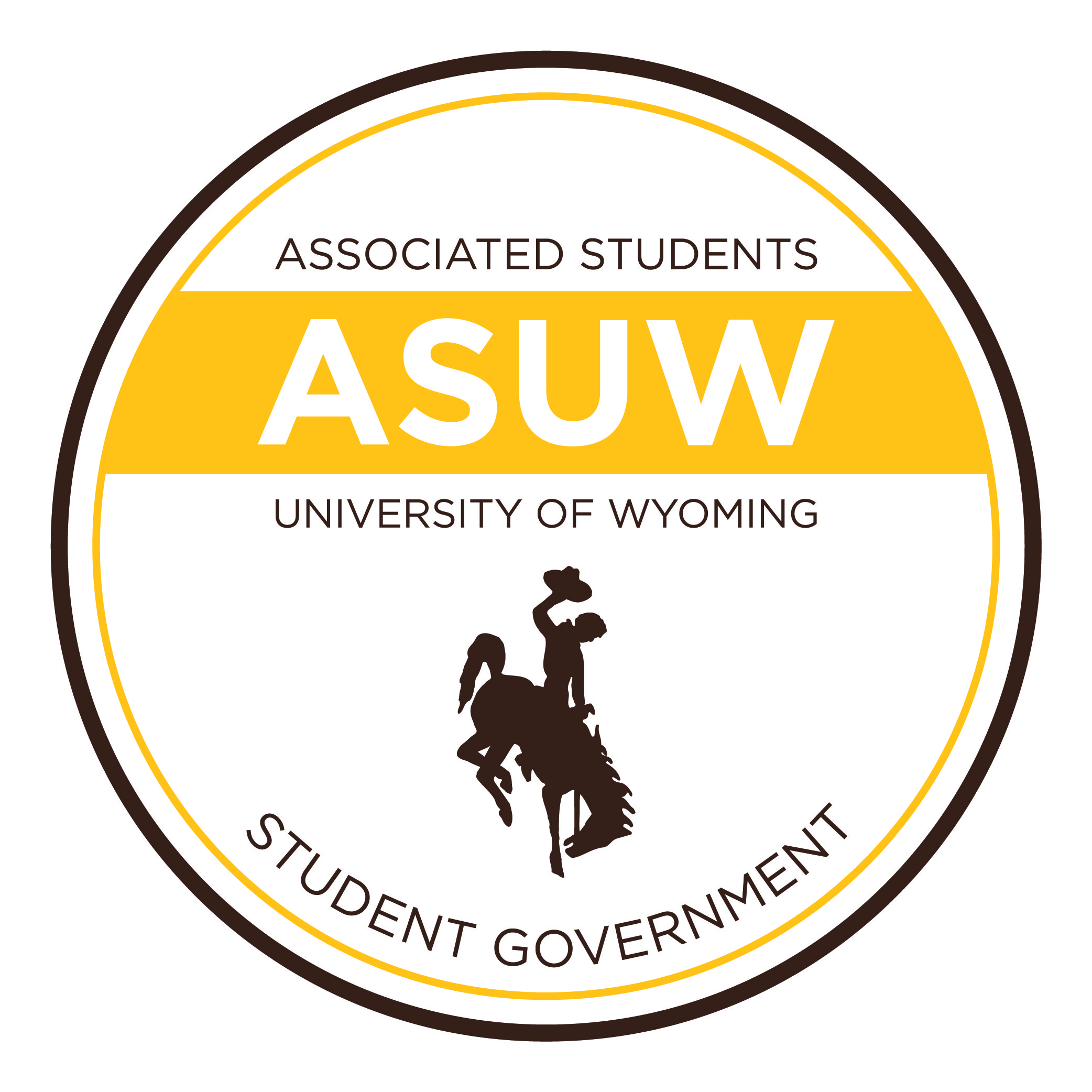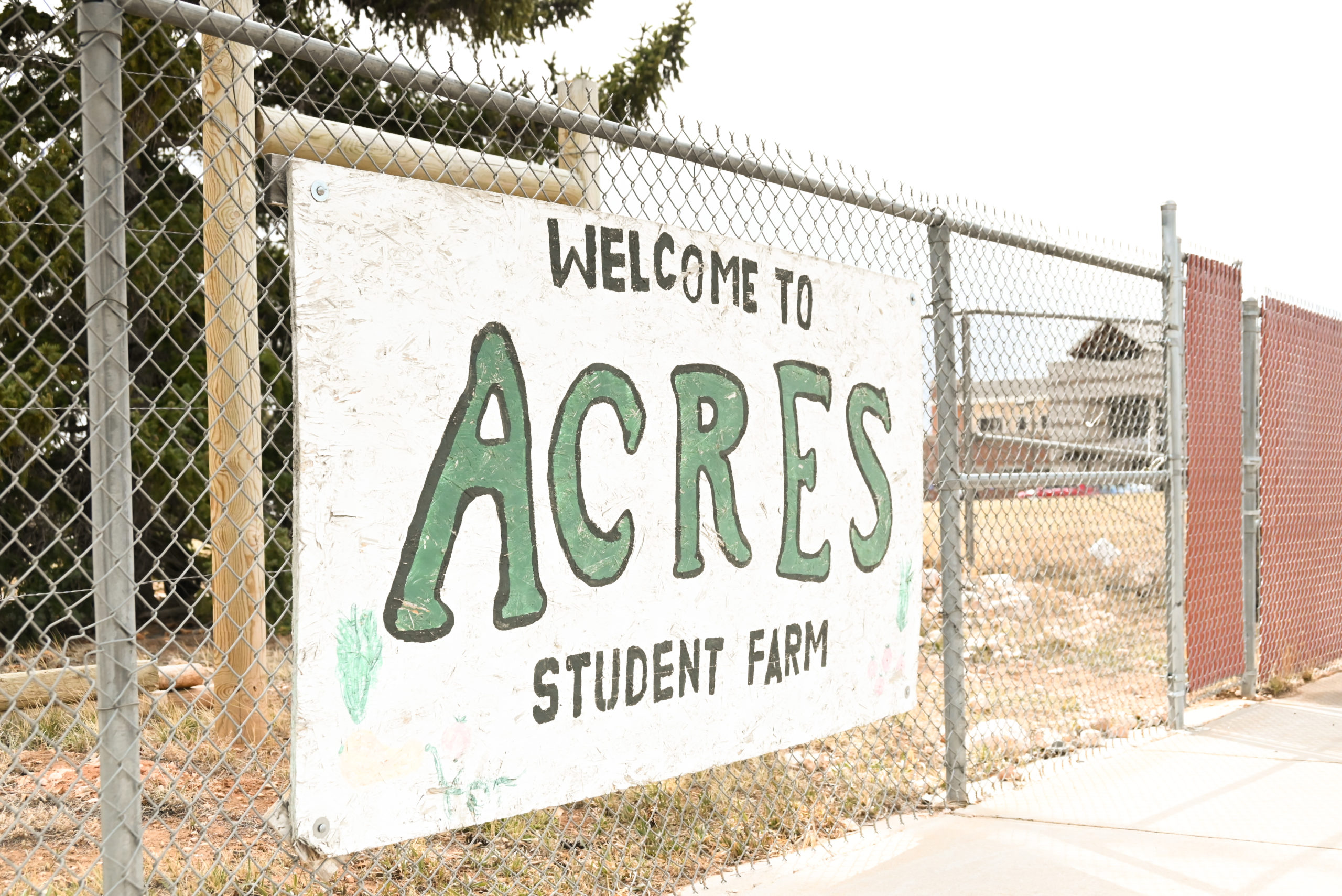Gathered around a tombstone for “Humanity” and its hubris, students and community members met on Prexy’s Pasture at the University of Wyoming on noon Monday to call for action on climate change.
Organizer Michael Selmer Jr. hosted and emceed the event, talking to the group about the increasingly pressing matter of climate change.
“We know it’s not going to change anything, but we must speak out,” he said. “I’m sorry we’re leaving you [younger generations] with a planet that’s headed for — and I don’t want to sound alarmist — a rough time.”
The goal of the event was to promote awareness and spark discussion about the environment. Several volunteers read aloud statements from renowned scientists such as Jennifer Francis, an atmospheric scientist, and James Edward Hanson, an American adjunct professor directing the Program on Climate Science, Awareness and Solutions of the Earth Institute at Columbia University. Other speakers brought their own personal statements about being affected by climate change.
“Pine Ridge Reservation is home to the Oglala-Lakota Nation, where we are currently experiencing the catastrophic events of climate change,” said a Native American UW student, reading aloud a testimony from Helen Garter, who holds a degree in natural sciences and indigenous earth sciences. “More than 1,500 people have been displaced from their homes and more than 100 structures have been destroyed as a result of severe flooding. … Science tells us that these events are made worse by climate change. It is real and it is affecting the Lakota Nation now.”
Coming from the West Coast, the last speaker gave her testimony on surviving the fires in Paradise, California. She recounted thinking it would be similar to other fires but then ending up returning to her home a month later to see it mostly destroyed.
“I wish I would have taken a few more things with me when we left,” Dalia Meekum said. “I thought that I would be able to come back. I didn’t know that that would be the last time I saw a lot of things.”
She talked about the efforts made to evacuate the town and the deaths of 85 people who could not make it out in time, saying said she felt lucky that she managed to survive. Megafires like this one are becoming more frequent because of climate change, according to an NPR report.
“I’ve seen how climate change has affected our world and I’ve also seen how humans can come together for a common goal,” Meekum said. “And it’s never been more important than it is today. We must keep raising awareness because everyone deserves to live in a world without preventable devastation.”
After testifying to the personal impacts of climate change, spectators recreated the “Carbon Sink” landscape art installed in late 2011 but removed after less than a year. The art was meant to link the destruction of forests to the use of fossil fuels.
Wyoming’s biggest revenue generator is the energy sector; outrage over the art installation from people with a vested interest in the fossil fuel industry played a part in its removal. Some Wyoming representatives even threatened to propose legislation that would withhold tax dollars earned from the energy sector from funding UW.
To recreate the installation, people representing indigenous and Native American peoples laid on the ground closest to the center, which Selmer said was because “they are the first affected in these changes while trying to preserve their way of life.” Next, students were invited to lie down, as the ones who will have to live with the damage already done to the environment. The last to lie down were those who were middle-aged or older since they will likely be gone before climate change impacts their lives in catastrophic ways.
In the center, Selmer and other volunteers placed some objects stylized as a tombstone, calling it the “Monument to Humanity”. This was not a part of the original installation but Selmer said he felt it was needed to share their thoughts behind the original art piece and the parallel in the recreation.
“The monument was something I came up with because we couldn’t accurately convey what the artist of the carbon sink had originally shown, which was a whirlpool effect of the environment being swallowed up by climate change,” said Selmer.
They placed flowers on the monument to make the recreation look more like a funeral for all of humankind.
“This is just the first of these climate change rallies that I’m hoping to do throughout the state,” said Selmer. “This reenactment was to let them know that no one is ever going to forget the carbon sink.”



